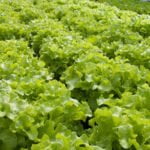Pressure treated wood is a popular choice for outdoor projects due to its durability and resistance to rot and pests. However, when it comes to using pressure treated wood in vegetable gardens, concerns about potential hazards arise. This article aims to provide a comprehensive understanding of pressure treated wood and its potential risks in vegetable gardens.
In this introductory section, we will delve into the process and chemicals involved in pressure treating wood, shed light on the controversy surrounding its use in gardening, and explore the factors that need to be considered before using it. By understanding these aspects, gardeners can make informed decisions about using pressure treated wood in their vegetable gardens.
The use of pressure treated wood in vegetable gardens has sparked a debate within the gardening community. While some argue that it poses no significant risk, others believe that the chemicals used in the treatment process can leach into the soil and ultimately contaminate crops. To better understand this controversy, we will examine different types of pressure treated wood available for gardening and investigate the scientific claims regarding harmful chemical leaching.
As more people embrace organic gardening practices and strive to grow their own safe and healthy food, it becomes crucial to assess the safety factors associated with pressure treated wood. In this article, we will provide tips and guidelines for using pressure treated wood safely in vegetable gardens. Additionally, we will explore alternatives to consider for those seeking safer options.
By examining the scientific evidence and considering various perspectives on pressure treated wood’s suitability for vegetable gardens, gardeners can make well-informed decisions about their choice of materials. So let’s dive deeper into this topic by exploring what exactly pressure treated wood is and why there are concerns regarding its use in our precious vegetable gardens.
What is Pressure Treated Wood
Pressure treated wood is a commonly used type of lumber in various construction projects, including building vegetable gardens. This section aims to delve deeper into the process and chemicals involved in pressure treating wood.
Pressure treated wood refers to lumber that has undergone a preservation process to enhance its durability and resistance to decay, insects, and other environmental factors. The process involves placing the wood in a pressurized chamber, where it is infused with chemical preservatives. These preservatives penetrate the wood cells, creating a barrier that protects it against harmful elements.
The chemicals used in pressure treating wood vary depending on the desired level of protection and the specific application of the wood. Historically, chromated copper arsenate (CCA) was widely used as a preservative for pressure treated wood. However, due to concerns over its potential impact on human health and the environment, CCA was phased out in residential uses in 2003. Currently, many pressure treated woods use alkaline copper quaternary (ACQ) or copper azole as alternative preservatives.
It is important for users of pressure treated wood to be aware of these chemicals and their potential risks. ACQ-treated lumber contains copper compounds that can corrode metal fasteners such as screws and nails over time.
Additionally, there have been some concerns about the effects of copper leaching into surrounding soil from ACQ-treated wood. Copper levels above normal soil concentrations may be toxic to certain plants and can also pose risks if vegetables grown in treated beds are consumed without thorough washing.
| Preservative Type | Main Components | Main Benefits |
|---|---|---|
| Chromated Copper Arsenate (CCA) | Copper oxide + arsenic acid + chromium trioxide | Durable protection against decay, insects, and fungi |
| Alkaline Copper Quaternary (ACQ) | Copper oxide + quaternary ammonium compounds | Economic alternative to CCA with reduced environmental concerns |
| Copper Azole | Copper and organic azoles (e.g. tebuconazole) | Effective resistance to decay, insects, and fungal attack |
While pressure treated wood can provide enhanced durability for vegetable gardens, it is crucial to consider the potential risks associated with using treated lumber. Understanding the chemicals involved in the process of pressure treatment allows gardeners to make informed decisions about whether or not to use pressure treated wood in their vegetable gardens.
The Controversy Surrounding Pressure Treated Wood
Pressure treated wood has long been a popular choice for outdoor construction projects, including vegetable gardens. However, there is a growing controversy surrounding its use due to potential health concerns and risks associated with the chemicals used in the treatment process.
One of the main concerns with pressure treated wood is the presence of chemicals such as arsenic, chromium, and copper. These chemicals are used to prevent rotting and insect damage, but they can also leach into the surrounding soil over time. This raises concerns about the potential effects on human health and the environment.
The Environmental Protection Agency (EPA) has established standards for allowable levels of these chemicals in pressure treated wood products. However, studies have shown that even low levels of exposure to these substances can have harmful effects. Arsenic, for example, is a known carcinogen and can also cause damage to the nervous system.
To minimize the risk of exposure to these chemicals, it is important to take certain precautions when using pressure treated wood in vegetable gardens. First and foremost, it is recommended to avoid using this type of wood for any structures that come into direct contact with edible plants or their roots. Instead, consider using untreated or naturally resistant woods such as cedar or redwood.
If you do choose to use pressure treated wood in your vegetable garden, it is important to take steps to minimize contact between the wood and your crops. This can be done by lining raised beds or containers with plastic or other materials that create a barrier between the soil and the wood. Additionally, avoid using pressure treated wood near water sources or in areas where children may come into contact with it.
Examining the Different Types of Pressure Treated Wood Available for Gardening
Pressure treated wood is a commonly used material in gardening, including vegetable gardens. However, it is important to understand the different types of pressure treated wood available and their suitability for use in vegetable gardens.
There are several types of pressure treated wood that can be used for gardening purposes. The most common types include:
- ACQ (Alkaline Copper Quaternary): ACQ is one of the most widely used treatments for pressure treated wood. It is a water-based preservative that contains copper and other chemicals to protect against rot and decay. ACQ-treated wood is considered safe for use in vegetable gardens as it does not leach harmful chemicals into the soil.
- CA (Copper Azole): Copper Azole is another popular treatment option for pressure treated wood. It uses copper and an organic azole compound to protect against decay and insect damage. Like ACQ, CA-treated wood is generally considered safe for use in vegetable gardens.
- CCA (Chromated Copper Arsenate): CCA was once widely used for pressure treated wood but has been phased out due to health concerns. It contained arsenic, which posed a potential risk of leaching into the soil and being absorbed by plants. While old CCA-treated wood should not be used in vegetable gardens, it may still be found in older structures or reused materials.
It is important to check with your local building supply store or lumberyard to ensure that you are purchasing pressure treated wood that is safe for use in vegetable gardens and meets current safety standards.
| Type of Pressure Treated Wood | Main Chemicals Used | Suitability for Vegetable Gardens |
|---|---|---|
| ACQ (Alkaline Copper Quaternary) | Copper, Quaternary compounds | Safe |
| CA (Copper Azole) | Copper, Organic azole compounds | Safe |
| CCA (Chromated Copper Arsenate) | Arsenic (discontinued) | Not safe |
Can Pressure Treated Wood Leach Harmful Chemicals into the Soil
Pressure treated wood has long been a popular choice for constructing outdoor projects, including vegetable gardens. However, there has been ongoing concern about whether or not pressure treated wood can leach harmful chemicals into the soil, potentially contaminating the vegetables grown in these gardens. In this section, we will delve into the science behind these claims and investigate the potential risks.
The Process of Pressure Treated Wood Treatment
To understand if pressure treated wood can leach harmful chemicals into the soil, it is important to first explore the process and chemicals involved in treating this type of wood. Pressure treated wood is typically made by infusing the wood with preservatives under high pressure. These preservatives are designed to protect against decay and insect damage, prolonging the lifespan of the wood.
The Potential for Chemical Leaching
One of the main concerns regarding pressure treated wood in vegetable gardens is the potential for chemical leaching from the preservatives into the surrounding soil. The preservatives used in pressure treated wood traditionally contained compounds such as chromated copper arsenate (CCA), which raised significant health concerns due to its arsenic content.
However, it is important to note that CCA has been phased out for residential use in most countries, including the United States. Today, other preservatives that do not contain arsenic or other harmful chemicals are commonly used in pressure treated wood. These alternatives include alkaline copper quat (ACQ), copper azole (CA), and micronized copper azole (MCA). Research has shown that when used correctly and according to regulations, these modern preservatives pose minimal risk of chemical leaching.
Testing and Regulation
In order to ensure that pressure treated wood meets safety standards, independent testing and regulation have been implemented by organizations such as the Environmental Protection Agency (EPA). These tests evaluate the resistance of preservative-treated products against fungal decay and termite attack, as well as the potential for chemical leaching.
It is important for consumers to look for wood that has been assigned a Hazard Class rating by the American Wood Protection Association (AWPA). This rating indicates which applications and environments the wood is suitable for, based on its resistance to decay and insect damage. By choosing pressure treated wood that is appropriate for vegetable gardens, gardeners can minimize any potential risks associated with chemical leaching.
Assessing the Safety Factors
Understanding the Risks: Potential Hazards of Pressure Treated Wood
Before using pressure treated wood in your vegetable garden, it is important to assess the potential risks and hazards involved. The primary concern with pressure treated wood is the chemicals that are used in the treatment process. Historically, chromated copper arsenate (CCA) was commonly used as a preservative in pressure treated wood, which contained arsenic, copper, and chromium. These chemicals can leach into the soil over time and may pose health risks if ingested or absorbed by plants.
Familiarizing Yourself with Modern Alternatives
To address these concerns, the Environmental Protection Agency (EPA) phased out the use of CCA for residential applications in 2004. Since then, alternative preservatives have been introduced that are deemed safer for use around vegetation. Some common alternatives include Alkaline Copper Quaternary (ACQ), Copper Azole (CA), and Micronized Copper Azole (MCA). These newer preservatives utilize copper compounds without the presence of arsenic or chromium.
It is crucial to check the label or consult with a professional to determine which type of preservative has been used on your pressure treated wood. Understanding the specific chemicals involved can help you make an informed decision about whether or not it is suitable for your vegetable garden.
Weighing the Factors: Assessing Your Risk Tolerance
Ultimately, whether or not to use pressure treated wood in your vegetable garden comes down to a personal decision based on your risk tolerance. If you are concerned about potential chemical leaching and want to minimize any possible risks to yourself and your family, it may be best to explore alternative options.
However, if you decide to proceed with using pressure treated wood, there are steps you can take to mitigate some of the potential risks. These include lining the inside of your raised bed with a plastic barrier to prevent direct contact between the wood and soil, using a non-toxic sealant to create an additional barrier, and avoiding planting vegetables with shallow root systems directly against the sides of pressure treated wood.
By thoroughly researching the specific type of pressure treated wood you plan to use and considering your own risk tolerance, you can make an informed decision about whether it is appropriate for your vegetable garden.
Alternatives to Pressure Treated Wood for Vegetable Gardens
One concern with using pressure treated wood in vegetable gardens is the potential leaching of harmful chemicals into the soil. While some experts argue that the risk is minimal, others prefer to err on the side of caution and suggest exploring safer alternatives. Luckily, there are several options available for gardeners who want to avoid pressure treated wood while still building durable and long-lasting structures for their vegetable gardens.
- Cedar or Redwood: Both cedar and redwood are naturally resistant to decay, making them excellent choices for raised beds, fences, and trellises in vegetable gardens. These woods not only have a beautiful aesthetic but also provide durability without the need for chemical treatments.
- Composite Wood: Composite wood is made from a combination of recycled materials such as wood fibers and plastic. It offers the look and feel of real wood while being highly resistant to rotting, warping, and insect damage. This makes it a safe option for vegetable gardens where food safety is a priority.
- Untreated Hardwood: If you’re looking for a more affordable alternative, untreated hardwood such as oak or black locust can be used in vegetable gardens. While these woods may not be as resistant to decay as cedar or composite wood, they can still provide several years of service if properly maintained with regular sealing or staining.
- Concrete Blocks or Bricks: Another option to consider is using concrete blocks or bricks to create raised beds or borders in your vegetable garden. These materials are non-toxic and do not degrade over time, making them a safe alternative to pressure treated wood.
When choosing an alternative to pressure treated wood for your vegetable garden, it’s important to consider factors such as durability, cost, aesthetics, and environmental impact. Each option has its pros and cons, so weigh them carefully before making your decision.
Remember that no matter which material you choose, proper construction techniques should be followed to ensure the longevity and stability of your garden structures. Plan for adequate drainage, use appropriate hardware, and consider adding a protective barrier such as landscape fabric between any wood and the soil to minimize contact.
By exploring these safer alternatives, you can create a healthy and sustainable vegetable garden without compromising on quality or aesthetics.
Best Practices
Pressure treated wood can be a controversial topic when it comes to using it in vegetable gardens. However, if you decide to use pressure treated wood in your garden, there are some best practices and guidelines that you should follow to ensure safety and minimize any potential risks.
First and foremost, it is important to understand the different types of pressure treated wood available for gardening. Some woods are treated with chromated copper arsenate (CCA), which contains arsenic, while others may use alternative chemicals such as alkaline copper quat (ACQ) or copper azole. It is recommended to choose pressure treated wood that does not contain arsenic, especially if you have concerns about chemical leaching into the soil.
One of the key best practices is to create a barrier between the pressure treated wood and the soil or plants. This can be done by lining the inside of raised beds with a heavy-duty plastic liner, ensuring that no direct contact is made. Additionally, avoid using pressure treated wood for any parts of your garden where edible plants come into direct contact with the wood.
Regular maintenance of pressure treated wood is also crucial for its long-term safety. Any areas where the wood becomes worn or damaged should be immediately repaired or replaced to prevent any potential leaching of chemicals into the soil.
Another important guideline is to practice good hygiene when handling pressure treated wood. Always wear gloves and protective clothing when working with this type of wood. After handling pressure treated lumber, wash your hands thoroughly before eating or touching your face to minimize any potential exposure to chemicals.
Lastly, consider testing the soil periodically for any traces of chemicals from pressure treated wood. There are test kits available that can help determine if any leaching has occurred. Regular testing will ensure early detection and allow you to take appropriate measures if necessary.
By following these best practices and guidelines, you can mitigate potential risks when using pressure treated wood in your vegetable garden. However, it is always important to weigh the potential hazards against the benefits and consider alternative options if you have concerns about the safety of pressure treated wood.
The Bottom Line
The use of pressure treated wood in vegetable gardens has long been a topic of debate among gardeners and experts alike. After exploring the process and chemicals involved in pressure treating wood, as well as the potential health concerns and risks associated with it, it is clear that caution should be exercised when considering this option.
The safety factors, such as the type of pressure treated wood used and the leaching of harmful chemicals into the soil, must also be carefully considered.
While pressure treated wood can provide durability and longevity to garden structures, there are alternative options available that may offer safer alternatives for vegetable gardens. These alternatives include untreated or naturally rot-resistant woods like cedar or redwood, as well as composite materials made from recycled plastics. These materials may not require chemical treatments and therefore eliminate the potential risk of harmful chemicals leaching into the soil.
Ultimately, the decision on whether to use pressure treated wood in a vegetable garden should be based on careful consideration of all factors involved. It is important to weigh the potential risks against the benefits, taking into account personal preferences and priorities. If choosing to use pressure treated wood, following best practices such as sealing exposed surfaces and avoiding direct contact between soil and treated wood can help minimize any potential risks.
In conclusion, while pressure treated wood can be used in vegetable gardens under certain circumstances, it is crucial to proceed with caution. Consideration should be given to alternative materials that are safer for growing edible plants. Overall, it is essential to prioritize the health and safety of ourselves and our families when making decisions regarding our gardens.
Frequently Asked Questions
Is pressure treated lumber safe for raised garden beds?
Pressure treated lumber, which is generally treated with chemicals such as chromated copper arsenate (CCA) or alkaline copper quat (ACQ), has long been used in the construction of outdoor structures due to its durability and resistance to decay. However, there have been concerns about the potential leaching of these chemicals into the soil and subsequently into plants when pressure treated lumber is used for raised garden beds.
While studies have shown that the amount of chemicals leached may be minimal, it is generally recommended to avoid using pressure treated lumber for vegetable gardens to minimize any potential risk of chemical exposure.
What wood preservative is safe for vegetable garden?
When it comes to wood preservatives that are safe for vegetable gardens, there are a few options available. One commonly recommended preservative is natural linseed oil or tung oil, which can help protect the wood from moisture and decay without posing any risks to human health or plant growth.
Another option is using untreated cedar or redwood, which naturally resist rotting and can be a suitable choice for raised garden beds. It’s important to note that even though these options are considered safe for vegetable gardens, regular maintenance such as reapplying oil may be necessary to extend their lifespan.
What wood should not be used in a raised garden bed?
There are certain types of wood that should be avoided when constructing raised garden beds due to their potential negative effects on plants and soil. These woods include chemically-treated lumber like pressure treated wood with CCA or ACQ, as mentioned earlier. Additionally, other woods that contain natural substances harmful to plants include black walnut and Osage orange (or hedge apple).
These particular woods produce chemical compounds known as allelochemicals that inhibit the growth of many plants around them. Therefore, it’s best to steer clear of these types of wood in order to create an optimal environment for your raised garden bed where plants can thrive without being negatively affected by chemicals or allelopathic interactions.

If you’re looking to get into vegetable gardening, or are just looking for some tips on how to make your current garden better, then you’ve come to the right place! My name is Ethel and I have been gardening for years. In this blog, I’m going to share with you some of my best tips on how to create a successful vegetable garden.





